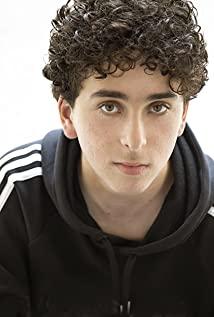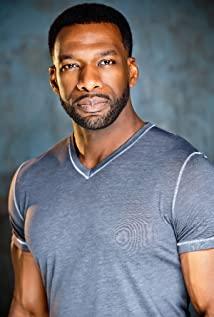I remember that in the WWE Iron Cage Fight that was broadcast live at the end of February last year, John Cena was the fourth to play. I haven't seen Cena for a long time since then, and his signature finisher, You Can't See Me. Where do I know that when I saw him again in a flash, it turned out to be in the movie "Bumblebee" - American Private Burns, played by Cena's true character, in this sci-fi movie with an important role in the classic IP "Transformers" as the protagonist. To the role of needle threading.
Directed by the famous stop-motion animation director Travis Knight, this "Transformers" series of independent spinoffs is fundamentally related to the "Tough Guys Never Look Back at the Explosion" director Michael Bay's Transformers series. different. The background of the story chosen by Knight comes from the "Transformers" G1 animation, which is 1987 when the long-term Cold War between the United States and the Soviet Union is about to end. It was in that year that the United States and the Soviet Union signed the "Intermediate-Range Nuclear Forces Treaty", which now seems to trigger international disputes at any time, and imposed mandatory constraints on each other's endless nuclear arms race. The interesting thing is that "Bumblebee" is a story that took place on the West Coast of the United States in the spring and summer of 1987. At that time, Gorbachev had just agreed to solve the problems of the medium and the "Star Wars" separately. Many people at the top of the White House disagreed. The sincerity of the Soviet Union has expressed doubts, and the panic that pervades the military and the civilian population is even stronger than most of the Cold War years before the negotiations: it is the Doomsday clock like "Watchmen" set to near zero, or Kubrick The madness of the Doctor getting up from his wheelchair and walking at the end of Dr. Strangelove.
The "Bumblebee" movie well demonstrated the panic from both the military and civilian directions at the time. First, the U.S. military allowed the Decepticon duo to use a variety of highly classified equipment, including satellites, at will to search for Bumblebee's hiding places, ignoring citizens' privacy and global security. The motive is just to worry that once the United States rejects the demands of these two mechanical race aliens, they will turn to the Soviet Union for help. If the Soviet Union obtains alien technology, it will inevitably affect the balance of power between the two sides in the Cold War. The most ridiculous thing is that the two Decepticons, Shatter and Dropkick, didn't even know that there was a Soviet Union on the earth. They just followed the signal left by the tribe and landed on this planet to complete the task—— A series of decisions made by the US military are purely delusions under the influence of the Cold War mentality. On the private side, Uncle Hank, the heroine Charlie who runs the junkyard, is a typical believer in the future of nuclear explosions. He has a negative attitude towards "now": because once a nuclear war breaks out, all existing orders will be destroyed.
The heroine Charlie is an extremely successful character, played by Hailee Steinfeld, the voice actress of Spider-Man Gwen Stacy in the recent hit Marvel animated film "Spider-Man: Into the Spider-Verse." The girl who was born in 1996 once played Mattie Ross, a little beauty with two braids in the Coen brothers' business card "Thunderbolt". Hailey, who was less than 14 years old at the time, showed extremely strong acting skills, not losing to the 17-year-old girl Rui played by Jennifer Lawrence in "Winter's Bone" (although the eldest cousin was already 19 years old when the film was filmed), and Lai Onne's "Once Upon a Time in America" is also played by 14-year-old Jennifer Connelly as Deborah as a teenager. Although "Bumblebee" is a sci-fi genre film, it is not a drama film that can win an Oscar in the traditional sense, but in the current "Wolverine 3: The Deadly Fight", the old Wolverine sells so badly that the audience is full of tears, "The Shape of Water Story" "Under the general trend that a sci-fi fairy tale can win the grand prize, the plot logic shown in sci-fi films, as well as the acting performance of the main actors, cannot be ignored. It is a very important reference for film selection before the screening.
Charlie, the girl played by Hailey in "Bumblebee", her father died of a heart attack, and her mother quickly came out of her grief, found a new husband, and lived a sweet life. But Charlie closed herself off because of her father's death. She used to be an intercollegiate diving athlete and won countless medals and trophies. She was a cheerful and happy sunny girl. After her father died, she never jumped over water again. I also don't want to watch the videotape with images of my father before his death. Charlie on the timeline of the film works at a stall in the carnival market, learning auto repair skills by herself, hoping to repair her father's car: because she stubbornly believes that as long as she has the ability to repair her father's car, it is the same as the yin and yang. Proof of contact with the separated father again.
Stepfather Ron has nothing good enough for Charlie. He has his own way of life. He is poor, easygoing, and full of positive energy, which is exactly the same as Charlie's mother's attitude towards life. Charlie will soon be eighteen years old. Seeing that all the beach boys and girls of the same age are driving cars, California is far and wide, but she can only ride a small motorcycle around. Contacting the previously mentioned car that could never be repaired by her deceased father, "owning your own car as an adult" gradually became Charlie's biggest knot in her heart.
It is conceivable that on her 18th birthday, Charlie, who was fully expecting her parents to hand over a car key, was so heartbroken when she received a colorful motorcycle helmet that was obviously for a child. The mother wanted to add fuel to the fire, and gave her another lecture, telling her that when riding a motorcycle, she must wear a helmet... As a result, Charlie rushed out of the door in anger.
At this time, she had the most impulsive idea in her heart - when she went to buy auto repair supplies before, she once happened to see a gray old yellow beetle at Uncle Hank's place. Although it was old and broken, it seemed to be bad. Quite serious, but especially eye-catching. Maybe she has a chance to convince Uncle Hank to make a deal with him: as long as she can repair the Beetle with her auto repair skills, and then help the old man for a year, she may be able to exchange for this one. The right to use the car?
After learning that today was Charlie's eighteenth birthday, Uncle Hank generously gave the car directly as a birthday present to her. Maybe he really felt sorry for the girl who lost her father, maybe he judged that the car couldn't be repaired at all, it was a pile of broken metal, and it was better to sell a favor to an acquaintance. It doesn't matter what the truth is, what matters is that the true identity of this yellow beetle is that before Cybertron was completely controlled by the Decepticons, the Autobot leader Optimus Prime sent the earth to rebuild the base with the intention of making a comeback. One of the special commissioners B127. Compared with other Cybertronians, this commissioner is extraordinarily compact, but he is not ambiguous in fighting his opponents. He has an efficient and deadly move like a ninja in the East, and his arms will stick out sharp hands at any time. Thorn, and the face will be covered with a ninja mask when the battle is fierce.
After being launched to the earth, he happened to encounter Cena and his comrades' army exercises first, and then the Decepticons' pursuit, Blitzwing, followed. In the continuous struggle, although the enemy was defeated, the memory module of B127 and the pronunciation The unit is completely damaged, and accidentally scans a Volkswagen Beetle before falling asleep... Later, Charlie discovers the B127 while repairing the Beetle that Uncle Hank gave her, and becomes friends with him. B127 can only make a humming sound because of the broken sound mechanism, so Charlie named him "Bumblebee".
This episode is basically copied from the classic "Transformers" G1 animation first episode story "First Day". In the Cybertron Star Wars, which is less than ten minutes at the beginning, Optimus Prime, Alsie, Sonic, Robot Dog, etc. The fighting of the classic villains is also closely followed in the G1 animation of the year: since no actual vehicles on the earth were scanned, the deformed forms of the Autobots and Decepticons on Cybertron are based on references such as "Jason". "Family" animation-like future streamlined shape. This kind of art setting of "maintaining similar shapes in subtle differences" can only be done by director Knight and his Laika animation company who have been in charge of stop-motion films such as "Zombie Bride" and "The Box Monster" who have achieved high attainments in styling design. Can handle it. As for whether Optimus Prime's earth form will appear in the film, will the 74 Chevrolet Camaros set by Michael Bay be a tribute?
In the past ten years or so, Michael Bay's "Transformers" series one to five can be said to have always been completely commercial popcorn films, mainly entertainment, and did not think much about the plot and the emotional logic of the characters. This time, "Bumblebee" Michael Bay was turned into a producer, and Paramount Pictures handed over the command to Director Knight. Therefore, "Bumblebee" retains the hot and cool of Michael Bay-style movies, while also compatible with the emotional expression that Knight Grid animation is good at. Charlie's character setting is close to Mick, the girl protagonist of McCullers' novel "The Heart is a Lonely Hunter". She has a boyish name, loves rock and rolls, and when she's brushing her teeth in the morning, she's like Mick Jagger. When she suffered great grievances from her family, she would not indulge, but would often endure it. When it was time to work part-time, she would wear a colorful motorcycle helmet that symbolizes her family when it was time to pay attention to safety. The guy in the neighborhood who also knows Bumblebee's secrets is a pretty real character: he's already had a crush on Charlie, works in the same place as Charlie, and is shy when he takes off his shirt in front of Charlie. Just such a real boy, there is no ambiguity when it comes to making sacrifices. Even my younger brother Otis, who I once thought was more like Dudley, the Muggle child of my aunt's family, who was a bad but stupid "paper man" character in "Harry Potter and the Philosopher's Stone", did his best to help at critical times. Here's my sister, click here. The emotional lines of almost all characters have made emotional and logical "choices" in accordance with changes in the situation, but the results are not important. They always try their best to do what they need to do, sometimes they are confident, and more often they are arrogant and funny-for those superhero-style sci-fi films that need to show "superhuman strength", This is especially valuable because they are significantly more real, like our neighbors and friends in the real world, and more immersive on the big screen.
Many of the characters in Bumblebee fail and make mistakes all the time. If it is a movie like Marvel and DC that basically can't die except for the tricks, it's okay to make mistakes and fail, after all, the price is not high. The worst thing is that Knight is "no ambiguity about killing people" in his own movie: in order to avoid spoilers, I won't say much here, anyway, the characters who take the initiative to die must be given a lunch, and in this film When the Transformers fight, it's really life-and-death, and the attack is particularly ruthless-this kind of cult style in the 1980s is also a major attraction of this film.
I don’t know if it’s because the change of director changed the presentation style, or whether Laika’s technology in “Legend of Magic Strings” was applied to “Bumblebee”. Compared with the previous Transformers movies, the transformation process of Cybertron in this film is in the details. There has been great progress. The impressive transformation scene begins with Charlie's first encounter with Bumblebee: she climbs under the car for repairs and accidentally sees Bumblebee's face. As a result, Bumblebee, discovered by humans, completed the entire process of transforming from a Beetle into a robot directly above Charlie's body. The director seems to have deliberately slowed down the transformation, setting Bumblebee in a spectacle of a human encounter with aliens, with a surprised Charlie as the backdrop. The folding changes of every part and part are selected in bright ambient light and displayed with almost fixed camera positions - the process is very natural, without the time and space pressure of deformation in battle. For the nostalgic '80s audience, it feels like playing with a Hasbro Transformers toy. This soothing viewing state is extremely rare in previous Transformers films directed by Michael Bay. Michael Bay's Cybertronian metamorphosis representations tend to be more aggressive than Knight's, but ignore the history they were originally designed as toys.
However, on the other hand, Michael Bay-style transformations and explosions, fighting scenes and big scenes are essential, and fortunately, these are also not lacking in "Bumblebee". When I watched "Transformers" before, the most common complaint was that "transformation is unnecessary here." This time, the two main villains in the "Bumblebee" movie smash and bounce the ball are two-stage deformation: Red smashes can be turned into jets and muscle cars, and blue bouncing balls can be turned into gunships and cars. Including Bumblebee, each of their transformations in combat is based on evidence, and the main purpose is to use the environment through transformation to gain combat advantages. Therefore, although there are not many battle scenes in the film, it looks very enjoyable. Especially the two-stage deformation of the villain, there will be a combined operation of first turning into a car to resist the impact, changing the direction of travel, and then turning into an aircraft to counterattack. The villain uses the strategy of deformation flexibly, and the ninja fighting skills of the bumblebee are unique.
Knight also played a deep stalk in "Bumblebee" to pay tribute to Guillermo del Toro's "The Shape of Water", which is Charlie's underwater hug with Bumblebee at the end of the film, pay attention to the swaying posture on the camera And the overall lighting, everything is unspoken. For the senior WWE American wrestling fans who came specially for Cena, "Bumblebee" also did not forget to sprinkle sugar: Due to possible spoilers, I won't go into details here. All in all, Cena gives a salute! This salute is completely in line with the logic of the plot, and it does not seem superfluous in the eyes of ordinary audiences. For wrestling fans, however, it was as heart-warming as Cena's finishing move You Can't See Me.
Finally solve the problem. Don't You (Forget About Me) is a single released by the rock band Simple Minds in February 1985. Friends who have watched the classic film "The Breakfast Club" in the 1980s will definitely not forget the scene at the end of the film where Bender raised his right fist on the court and looked up to the sky. "Bumblebee" recreated this fist-raising image many times in its own time and space in 1987, as a tribute to a bygone era. Don't You (Forget About Me) is a song from The Breakfast Club, and it's the ending song for Bumblebee.
View more about Bumblebee reviews











